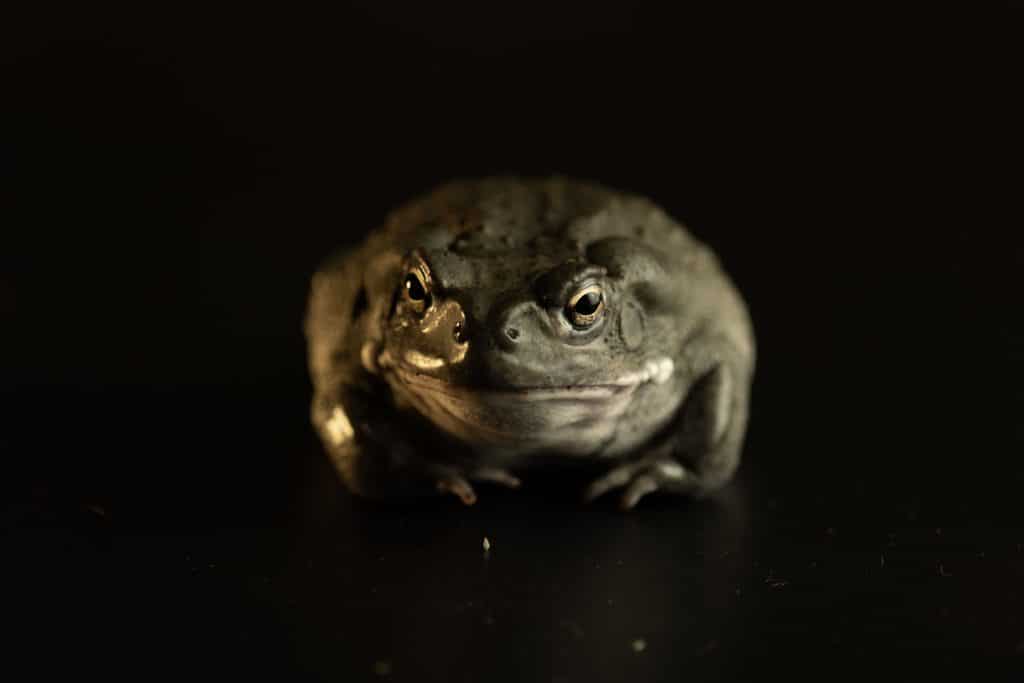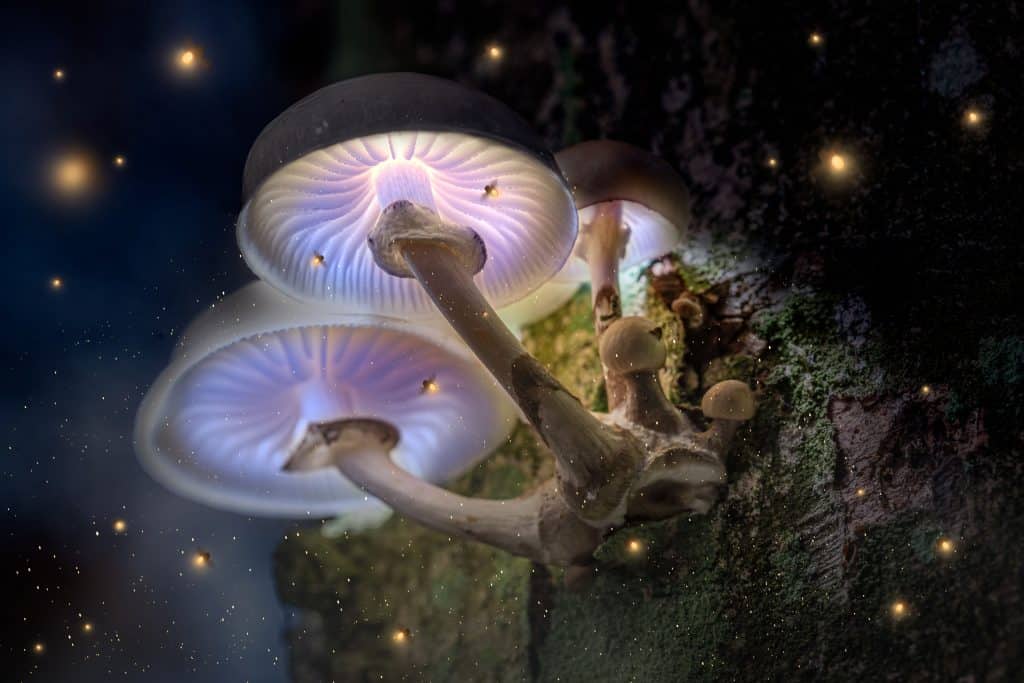The Amanita mushroom genus spans a large distance, and includes tons of different options. There’s the super deadly Amanita phalloides, the edible Amanita fulva, and the hallucinogenic Amanita muscaria. And apparently, the psychedelic Amanita citrina. What is this last one? And how does this psychedelic mushroom, differ from the standard?
Psychedelic vs muscimol mushrooms
Up until recently, if you lived in the US, there was only one kind of mushroom to trip on, psychedelic mushrooms. Psychedelic mushrooms are psilocybin mushrooms, which contain one of the four psychedelic hallucinogen compounds, psilocybin (which is grouped with DMT, LSD, and mescaline). These mushrooms (and the other compounds) are known for causing a strong serotonergic response, complete with vivid hallucinations.
More recently, the other hallucinogenic mushrooms have entered the picture: Amanita muscaria. Of course, these mushrooms aren’t new, they are simply from a different part of the world (Siberia, Northern Europe). They were never known to the population of America prior to now, because they weren’t there to be seen.
These mushrooms are not classified as psychedelic mushrooms, nor are they classed as hallucinogens. They’re of the Amanita genus, which classifies them as ‘poisonous’ mushrooms. Though the genus does include very poisonous mushrooms, like Amanita phalloides, Amanita muscaria is not associated with deaths, though these mushrooms do contain a compound that can induce sickness when not prepared correctly. That compound, ibotenic acid, is easily decarboxylated into the desired muscimol.
Hey, thanks for coming by. Feel free to check out the Cannadelics Weekly Newsletter for email updates; and for great promos on a ton of stuff like weed buds, vapes & other smoking equipment, edibles, cannabinoids (like HHC), amanita mushroom products, and way, way more. We’ve got it; come get it!
In terms of subjective effects, Amanita muscaria mushrooms, and their cousin Amanita pantherina, work their magic mainly by way of muscimol, which directly binds to GABAA receptors. Unlike psilocybin mushrooms, they’re more relaxing, as GABA is the neurotransmitter for relaxation. But like psilocybin mushrooms, they are capable of creating hallucinations. Thus, we have two kinds of magic mushrooms, that work in different ways, and produce different effects; while both create distortions in perception.
Amanita citrina
It seems the Amanita genus has yet more to offer though, and this offering brings us back around to psychedelic mushrooms. Amanita citrina aka ‘false death cap’ for its likeness to Amanita phalloides, has a pale yellow to white cap, connected to a white stem, with the same wart-like spots as Amanita muscaria. It is not considered an edible mushrooms, but its also not considered a deadly mushroom. These mushrooms are found in Europe and America, and tend to grow in woodland areas; particularly in the summer and fall.
These mushrooms do contain the deadly alpha-amanitin, a toxin found in other Amanita mushrooms like phalloides, and which is the amatoxin most responsible for death. However, Amanita citrina has only tiny amounts of this toxin, which keeps it from being considered deadly. It also doesn’t have muscimol, like muscaria and pantherina, meaning it doesn’t contain the sick-inducing ibotenic acid either.
But these mushrooms contain something interesting, and something we see in other places: bufotenin, a bufotoxin. If you’re up on the world of psychedelics, you probably recognize that name, as it’s the same compound found in ‘psychedelic toads’, aka Colorado River Toad. It’s 5-HO-DMT, an analogue of the psychedelic DMT, and similar to the other well-known derivative 5-MeO-DMT, another bufotoxin found in toads.
Thing is, DMT and psilocybin are structural analogues of each other, meaning they’re very similar in their molecular build, though not exactly the same. This means, not only are psilocybin and DMT similar to each other, but compounds like 5-HO-DMT, are similar as well. Bufotenin is actually an isomer of psilocin, the active compound in magic mushrooms (psilocybin is a prodrug which decarboxylate to make psilocin). Psilocin is 4-HO-DMT. So a mushroom containing bufotenin, is a psychedelic mushroom.
Like the four classic psychedelics, and their derivatives, bufotenin is serotonergic, and has great effect at 5-HT2A receptors, as well as 5-HT1A receptors. Meaning, though its in the Amanita genus, Amanita citrina, is a psychedelic Amanita mushroom.
Unfortunately, having said that, I also have to remind that these Amanita mushrooms don’t contain muscimol; so it’s not like you hit a jackpot of two different psychoactive compounds. But it does mean that this genus of drugs, contains both muscimol mushrooms, and psychedelic mushrooms. Which means, perhaps a mushroom does exist that contains the two; and perhaps we just haven’t found it yet.
What does Amanita citrina feel like?
In a place like America, where the main Amanita mushroom (muscaria) isn’t well-known, finding information on a lesser known species is going to be that much more difficult. And I guarantee its not a lack of interest – as high-inducing plants are generally of interest. But a strong user base of knowledge requires users. And in a place where these plants aren’t native, or using them isn’t a native practice, this is harder to find.
However, just like I found out about them, and just as Amanita muscaria grows in knowledge and popularity; Amanita citrina will likely experience its own renaissance. There is already interest building in mushroom and drug communities, particularly because of the bufotenin. I expect within a year, there will be way more experience stories out there. Right now, a great one exists in the first included attachment, in which the user said the experience was closer to previous experiences with 5-MeO-DMT, which is very similar.

More experiences are found here. As bufotenin is not new, the expectation is that these mushrooms are at least similar in experience to other bufotenin-containing plants/animals. I say ‘similar’ only because different plants and animals are made of other compounds as well, which often (like in the case of Amanita citrina), involve other tryptamines that play in. They also all include their own mix of other compounds that can work synergistically or antagonistically, creating different overall experiences.
One main question, of course, is how much of this DMT-like compound is produced? How much these mushrooms produce, is a main factor in how effective they are. This was looked into in 1953 by Wieland and Motzel, when the compound was first discovered. However, their finding of 15 grams of crystallized bufotenin picrate, from 100kg of fresh carpophores (fruiting body), equaled 45mg free base bufotenin per kilogram of mushroom. Though this isn’t a large amount, it was pointed out later, that the investigators didn’t use an efficient procedure, meaning the content prediction was likely off.
Bufotenin content
In subsequent research from 1979 called Bufotenine Concentrations in Carpophores of Amanita citrina (Schff) S. F. Gray, it was assessed more thoroughly. Researchers used thin-layer chromatography and gas chromatography on 14 different Amanita citrina samples, and found all the mushrooms observed to have similar amounts of bufotenin. According to this research, Amanita citrina mushrooms contain bufotenin in a range of 0.70-1.50% based on dry weight. They also found tryptamines serotonine and bufotenin-N-oxide, at ranges of 100-200 mg/kg and 300-600 mg/kg, respectively.
Researchers established that the bufotenin was mainly found in the stalk, with about half as much found in caps, and almost none in the bulb. What they found the bulb did contain, was a decent amount of 5-hydroxytryptophane, which is a precursor to bufotenin, indicating that more of this could mean a greater bufotenin effect internally. This would be similar to psilocybin, which decarboxylates to psilocin; and ibotenic acid, which converts to muscimol.
A standard bufotenin dose is 20-40mg, according to PsychnautWiki. A threshold dose is about 2mg, and a very heavy dose, 60mg or more. Assuming that a single mushroom weighs about 1-3 grams dried, this could mean 7mg on the low end (.7% of 1 gram) and about 45mg on the high end (1.5% of 3 grams). These measurement are according to the study results about bufotenin content. What we can see from this, is that even without super exact numbers, there’s enough bufotenin to get you high. And that doesn’t account for precursor compounds that transform to bufotenin internally.
Conclusion
Amanita citrina mushrooms present a different sort of high from Amanita muscaria, but one akin to a psychedelic high. Perhaps next we’ll identify a mushroom with both muscimol and bufotenin (or another DMT analogue) for the penultimate in magic mushrooms.

Welcome all! Thanks for making your way to Cannadelics.com; where we work daily to bring you the best in cannabis and hallucinogens reporting. Chill with us frequently to keep in-the-loop on important happenings; and sign up to our Cannadelics Weekly Newsletter, so you’re always up-to-date with what’s going on.





